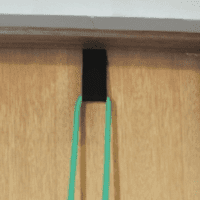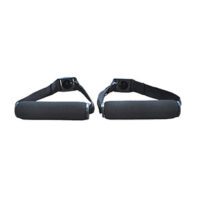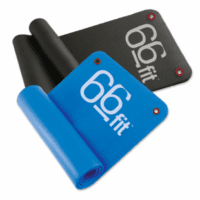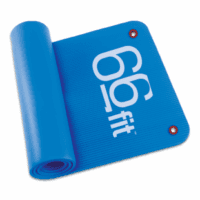Netball Injuries
Article by Zoe Russell


Netball Injuries
A Physiotherapist’s Guide to Prevention and Recovery
Netball stands as Australia’s premier team sport, with women participating in droves, showcasing the game’s vibrant impact. This high-octane sport tests muscular endurance, demanding players dash and dodge to gain the upper hand. The essence of netball—a blend of speed, agility, and tactical jumps—sets the stage for its exhilarating nature.
Despite netball’s reputation for safety, the reality speaks differently. The physical demands, coupled with its strategic play, lead to a spectrum of injuries. Addressing this concern head-on enhances players’ experiences and sustains the sport’s integrity.
The Prevalence of Netball Injuries
Netball accounts for a significant portion of sports-related injuries that lead to hospital visits in Australia. Alarmingly, organised netball competitions and practice sessions are where most injuries occur, signalling a need for heightened awareness and preventive measures.
Common Netball Injuries and Their Management
In the fast-paced world of netball, injuries are unfortunately a common occurrence, with some being more prevalent than others. An understanding of these common injuries and their appropriate physiotherapy treatments is essential for players and coaches alike.
Ankle Sprains
Ankle sprains top the list of common netball injuries. The sudden starts, stops, and side-to-side movements can lead to overstretching or tearing of the ligaments in the ankle. Physiotherapy for ankle sprains typically involves rest and ice initially, followed by exercises to restore mobility, strength, and balance. Proprioceptive training is also vital to prevent future sprains.
Knee Injuries
Anterior Cruciate Ligament (ACL) injuries are a serious concern for netball players. These injuries often require surgical intervention followed by extensive physiotherapy. Post-surgery, physiotherapy focuses on reducing swelling, restoring knee range of motion, and gradually re-strengthening the muscles around the knee, especially the quadriceps and hamstrings. Other knee ligament injuries and meniscal tears are frequent. Chronic injuries such as chondromalacia patella and knee arthritis exist in older long-term netball players.
Finger Injuries
Finger injuries, such as fractures and dislocations, occur when players mishandle the ball or collide with another player. Treatment involves splinting or taping the finger, followed by mobility exercises and strengthening once healing permits.
Overuse Injuries
Overuse injuries, like patellar tendinopathy or ‘jumper’s knee‘, are caused by repetitive stress on the tendons and muscles. Physiotherapy management includes rest, anti-inflammatory measures, and specific exercises to stretch and strengthen the affected area. Eccentric exercises are particularly beneficial in treating tendinitis.
Physiotherapy’s Role
Physiotherapists play a crucial role in both the treatment and prevention of netball injuries. Through tailored exercise programs, they enhance players’ strength, flexibility, and technique, reducing the risk of injury occurrence. Moreover, they provide education on body mechanics and movement strategies that are vital in a high-impact sport like netball.
Education on correct landing techniques, for instance, can significantly reduce the incidence of knee and ankle injuries. Learning to land with knees over toes and avoiding inward knee collapse is pivotal. Physiotherapists also instruct on core stability and hip strengthening, which are essential in providing a solid foundation for the dynamic movements inherent to netball.
Netball Injury Prevention
Injury prevention in netball isn’t merely advisable; it’s imperative. A robust fitness regime tailored for netball is crucial, targeting strength, agility, and the resilience of ankle and foot muscles. Ensuring a player’s readiness through fitness testing before matches is equally important.
Fine-Tuning for Safety
Dynamic warm-ups and cool-downs must become a staple to prepare for the rigours of the game and aid in recovery post-match. Integrating netball-specific exercises into training can bolster balance, control during landings, and directional changes, significantly reducing injury risks.
Coaching for Competence
Coaches bear the responsibility of staying abreast of the latest training techniques that emphasise correct landing and directional strategies. Their role in injury mitigation is pivotal, providing players with the knowledge and tools to play safely.
Response to Injuries
When injuries strike, the response should be swift and professional. Access to qualified first aid and a comprehensive rehabilitation plan is non-negotiable for a player’s return to court. It is this diligence in recovery that prevents recurrent injuries and upholds a player’s well-being.
Netball Sports Injury Insurance
Netball Australia offers a safety net, providing members with insurance for many non-Medicare expenses, which includes treatments such as physiotherapy and private hospital stays. This proactive step underscores the commitment to player safety and financial security, reinforcing the sport’s supportive infrastructure.
More information: Netball Australia Sports Injury Insurance
The Path to Recovery
For netball players, the journey back to the court post-injury is a measured one. It begins with acute care, transitions through rehabilitation, and ends with a return-to-play assessment. Throughout this process, physiotherapists are indispensable, guiding players every step of the way with evidence-based treatments and recovery plans. Their goal is not just to heal but to fortify players against future injuries, ensuring their safe and enduring participation in the sport they love.
In conclusion, while common netball injuries can be a setback, proper physiotherapy treatment offers a pathway to recovery and prevention, keeping players at their best and the game of netball thriving in Australia.
Rochedale - Call 38410277
Book Online: RochedaleSalisbury - Call 32751044
Book Online: SalisburySandgate - Call 32691122
Book Online: SandgateArticle by Zoe Russell
Sports Physiotherapy FAQs
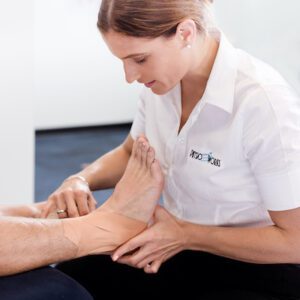

Sports Physiotherapy is the specialised branch of physiotherapy which deals with injuries and issues related to spokespeople. Practitioners with additional formal training within Australia are Sports & Exercise Physiotherapists.
What is Sports Physiotherapy?
Sports injuries do differ from common everyday injuries. Athletes usually require high-level performance and demands placed upon their bodies, which stresses their muscles, joints and bones to the limit. Sports physiotherapists help athletes recover from sporting injuries and provide education and resources to prevent problems. Each sports physiotherapist usually has sport-specific knowledge that addresses acute, chronic and overuse injuries. Their services are generally available to sportsmen and women of all ages engaged in sports at any level of competition.
Members of Sports Physiotherapy Australia (SPA) have experience and knowledge of the latest evidence-based practice, professional assessment and diagnosis of sports injuries, and effective hands-on management techniques and exercise protocols to assist recovery and prevent future damage. SPA members have access to the most recent advances in sports physiotherapy. You'll be pleased to know that most PhysioWorks physiotherapists and massage therapists are particularly interested in sports injury management.
General Sports Physio FAQs
- Sports Physiotherapy
- Acute Sports Injury Clinics
- Sports Physiotherapy Treatment
- Youth Sports Injuries
Injury Management
- Sports Injury? What to do? When?
- When Can You Back to Sport?
- Sports-Related Injuries
- Knee Sports Injuries
- Sports Health Conditions
Sports Massage
Sports Insurance
Related Articles
- Sports Injury Management: This article provides a comprehensive look at how sports injuries are managed, including prevention strategies and treatment options.
- Soft Tissue Injury Healing: Readers can learn about the healing process for soft tissue injuries, including practical advice for each phase of recovery.
- Prehabilitation: Key to Injury-Free Sports Performance: Offers insights into how athletes can prevent injuries before they occur, focusing on strengthening and conditioning practices.
- Athletics Injuries - Comprehensive Physio Guide: A detailed guide on common injuries in athletics and how to treat and prevent them, making it a valuable resource for athletes of all levels.
- Acute Sports Injury Clinic: Highlights the services offered by sports injury clinics, including fast-track assessments and treatments for acute sports injuries.
- Effective Management of Kids Sports Injuries: This guide focuses on the unique aspects of managing sports injuries in children, offering parents and coaches valuable advice on care and prevention.
More Information
Rochedale - Call 38410277
Book Online: RochedaleSalisbury - Call 32751044
Book Online: SalisburySandgate - Call 32691122
Book Online: SandgateCommon Muscle Injuries
A Physiotherapist's Guide
Introduction
Muscle injuries, presenting as muscle strain, pain or myalgia, are prevalent health issues affecting a wide range of individuals. This detailed guide, from a physiotherapist's perspective, delves into various muscle injuries, elaborating on their management, prevention, and the importance of professional advice. Explore the linked articles for an in-depth understanding of muscle injuries and their effective treatment.
Neck & Back Muscle Injuries: Causes and Solutions
- Back Muscle Pain: This pain often results from prolonged poor posture or physical overuse. Key to relief is engaging in exercises that strengthen the core muscles and improve posture, thereby alleviating the strain on the back.
- Neck Sprain: Caused by sudden, awkward movements, a neck sprain can benefit from a combination of gentle stretches and targeted strengthening exercises to restore flexibility and strength.
- Text Neck: A modern ailment resulting from extended mobile device use, text neck can lead to chronic pain. Regular breaks, posture-awareness, and neck-strengthening exercises are essential for prevention.
- Whiplash: Commonly occurring in car accidents, whiplash requires a careful approach including neck stabilisation exercises and controlled movement to encourage healing and prevent further injury.
Lower Limb Muscle Injuries: Understanding and Treating
- Hamstring Strain: Particularly common among athletes, particularly runners, this strain demands rest initially, followed by a carefully structured rehabilitation program focusing on gradual strength building and flexibility.
- Thigh Strain: Often seen in sports involving sprinting and jumping, thigh strains need a combination of rest, ice, compression, and elevation (RICE) in the initial stages, followed by carefully planned strengthening exercises.
- Groin Strain: This injury requires a nuanced approach, including sufficient rest and targeted exercises, to ensure a safe and effective recovery.
- Calf Muscle Tear: Key to recovery is a balance of rest, gentle stretching exercises, and a gradual return to full activity, ensuring the muscle heals correctly and strength is regained.
Upper Limb Muscle Injuries: Prevention and Care
- Golfer's Elbow and Tennis Elbow: Both these conditions involve inflammation of the tendons and require a rest period, followed by ice therapy and specific exercises tailored to strengthen the affected muscles.
- Corked Thigh: Resulting from direct impacts, these injuries demand immediate application of ice and a controlled, gradual exercise regime for recovery.
- DOMS, Fatigue-Related Cramps & Myalgia: Adequate rest, good hydration, and gentle stretching are crucial in alleviating these conditions.
- RSI: Regular stretching, ergonomic workplace adjustments, and taking breaks are key preventive measures for repetitive strain injury.
Systemic Causes of Muscle Pain: A Holistic View
- Fibromyalgia: This complex condition demands a holistic treatment approach, including exercise routines, stress management techniques, and sometimes medication.
- Rheumatoid Arthritis: Effective management combines medication, gentle exercise, and regular physiotherapy sessions.
Prevention and Management Strategies
- Regular Exercise: Regular physical activity helps maintain muscle strength and flexibility, reducing the risk of muscle injuries.
- Posture Improvement: Good posture, both in motion and at rest, is crucial for preventing muscle strain.
- Proper Warm-up and Cool-down: Adequate warm-up before and cool-down after physical activity is vital in preventing muscle strains and injuries.
- Ergonomic Adjustments: Making ergonomic adjustments at work and during daily activities can significantly reduce the risk of repetitive strain injuries and other muscle-related issues.
- Maintaining a Healthy Weight: Keeping a healthy weight reduces the strain on muscles, particularly in weight-bearing joints.
What to Do? Seeking Professional Advice
Consult a physiotherapist or doctor for personalised advice and treatment plans. Remember, early intervention can significantly improve recovery outcomes and prevent chronic problems.
Conclusion
While muscle injuries are common, effective management and prevention are achievable with the right approach and knowledge. Understanding the causes, symptoms, and various treatments available empowers individuals to take proactive steps in their recovery and prevention. For the most tailored and effective treatment, always seek the guidance of a professional physiotherapist.
Rochedale - Call 38410277
Book Online: RochedaleSalisbury - Call 32751044
Book Online: SalisburySandgate - Call 32691122
Book Online: SandgateCommon Ligament Injuries
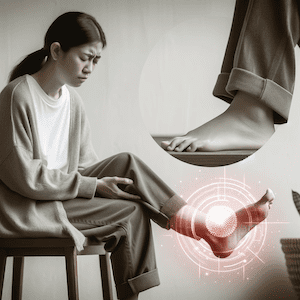

Ligament Injury
Ligament injuries frequently occur in various body parts, leading to pain and restricted movement. The most common sites include the knee, ankle, shoulder, wrist, hand, and spine.
Notably, knee injuries like ACL, PCL, MCL, and LCL sprains are prevalent.
Shoulder injuries often involve the AC joint, while wrist and hand issues can include thumb and finger sprains.
Spinal ligament injuries, such as back and neck sprains, and whiplash, are also significant. Understanding these injuries helps in prevention, early detection, and effective treatment.
- Ankle Ligament Injuries
- Knee Ligament Injuries
- Shoulder Ligament Injuries
- Wrist & Hand Ligament Injuries
- Spinal Ligament Injuries
Ankle Ligament Injuries
Ankle injuries often result from sudden twists or rolls, leading to sprains and strains.
Knee Ligament Injuries
Knee ligament injuries are among the most common and can severely impact mobility and quality of life.
- ACL Injury
- PCL Injury
- MCL Sprain
- LCL Sprain
- Posterolateral Corner Injury
- Patella Dislocation
- Superior Tibiofibular Joint Sprain
Shoulder Ligament Injuries
Shoulder ligament injuries can be debilitating, affecting a range of movements.
Wrist & Hand Ligament Injuries
Injuries in the wrist and hand are common, especially in sports and physical activities.
Spinal Ligament Injuries
Spinal ligament injuries can result from various causes, including posture issues and physical impacts.
Related Articles
- Ligament Tear - Common Ligament Injuries: Offers a comprehensive overview of ligament injuries across different body parts, including prevention, early detection, and effective treatment strategies.
- Knee Ligament Injury - A Physiotherapist's Guide & Tips: Provides insights into diagnosing knee pain, covering ligament issues among other concerns, and suggests pain relief methods through exercise and treatment.
- Common Ankle Ligament Injuries: A Physiotherapist's Guide: Discusses the treatment and prevention strategies for ankle ligament injuries, emphasising the importance of early intervention.
- Sprained Ankle Treatment & Recovery Guide: Offers detailed guidance on the recovery timelines for sprained ankles, highlighting the importance of restoring strength, motion, and function for a full recovery.
- Ankle Strapping: Complete Guide To Injury Prevention: Focuses on preventing ankle injuries through effective strapping techniques and discusses conditions like ankle arthritis and biomechanical issues.
- Sub-Acute Soft Tissue Injury: Explores the treatment and recovery process for various ligament injuries, including those affecting the knee, shoulder, wrist, hand, and spine.
- Sprained Thumb Treatment And Recovery Tips: Delivers practical tips for treating and recovering from a sprained thumb, along with general management strategies for wrist and hand pain.












